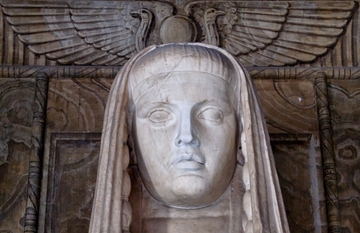13.7. Forward object¶
The Forward object has not yet been implemented as of version 0.4. Its purpose will be to facilitate the consideration of the effect of scatering angle on double and triple scattering paths arising from a collection of three nearly colinear atoms.
Because there is no way to recalculate any part of the FEFF calculation as part of IFEFFIT's fitting loop, there is no convenient and straightforward way to parameterize the effect of changing scattering angle. That is, it is possible to parwameterize a fitting model in such a way that it considers the possibility that inter-atomic distances change as the parameters of the fit are refined. In such a case, it is possible that the only way to logically resolve the distances to collinear or nearly-collinear paths is to allow the path to buckle.
There are many solutions to this problem. The data analysis program
XFIT actually does recompute FEFF during the course of the
fit. A number of approximate or interpolative solutions have also been
proposed. One involves pre-calculating double and triple scattering
paths of thesame length but over a span of scattering angles. These
precalculated paths are then used in an interpolative solution. The
mixing coefficients (i.e. x and 1-x in a two-point
interpolation) are computed from other parameters of the fit. This is
explained in detail in my graduate dissertation.
- P. J. Ellis and H. C. Freeman. \it XFIT – an Interactive EXAFS Analysis Program. Journal of Synchrotron Radiation, 2(4):190–195, Jul 1995. doi:10.1107/S0909049595006789.
The interpolation methodology explained in my thesis is complicated and error-prone to implement. The FSPath will do all of the rote work required to pre-calculate the paths and parameterize them for the interpolation. The input attributes will llikely be the species of the two scattering atoms, a math expression for calculating the length of the collinear single scattering path to the further of the two scattering atoms, and a math expression for computing the scattering angle. The math expressions will, of course, depend on the details of your fitting model.
Todo
Create Forward object
DEMETER is copyright © 2009-2016 Bruce Ravel – This document is copyright © 2016 Bruce Ravel
This document is licensed under The Creative Commons Attribution-ShareAlike License.
If DEMETER and this document are useful to you, please consider supporting The Creative Commons.
